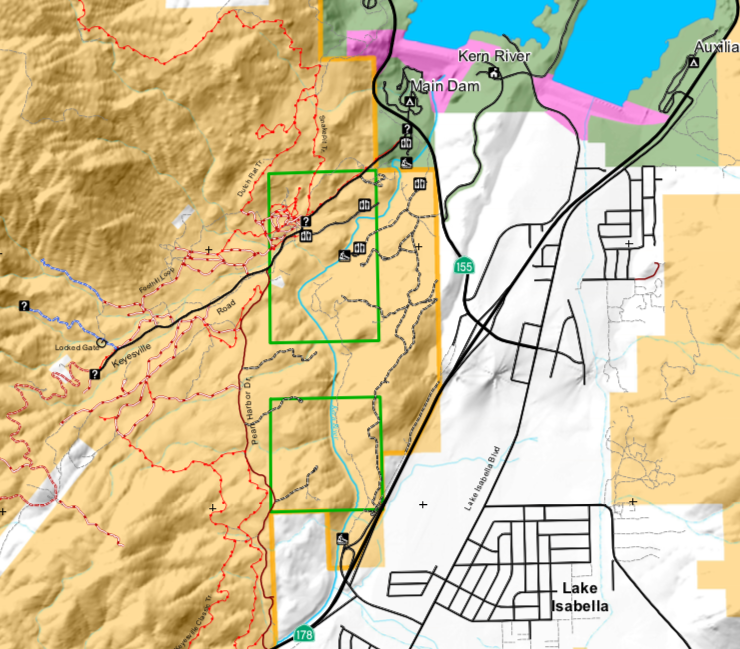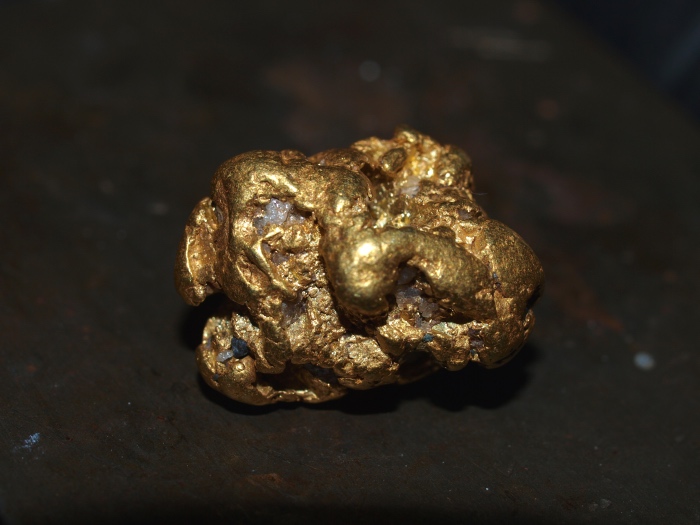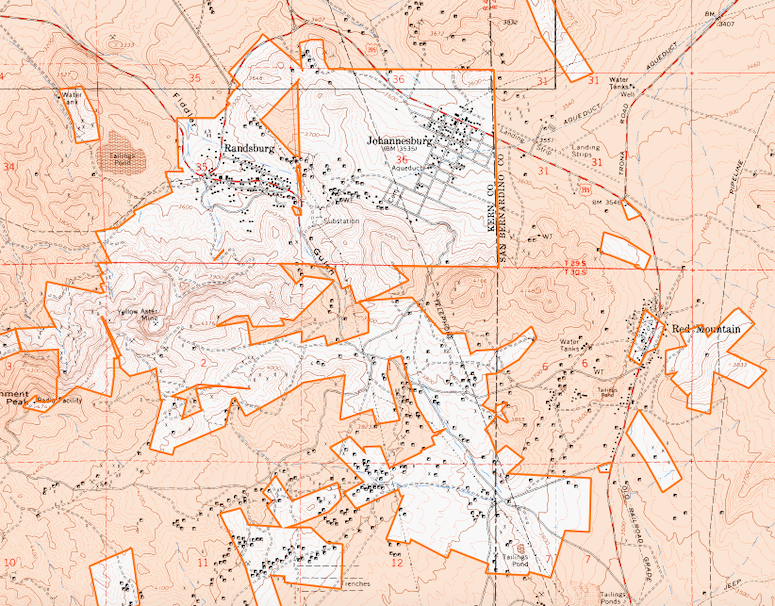
The earliest gold discoveries in Kern County were made at nearby Greenhorn Gulch. This area was far south of the major gold rush in the Sierra Nevada Mountains. These early gold strikes were made in 1851 and caused a renewed interest in this part of California.
Those first placer deposits were found at Greenhorn Creek, but much more extensive sources were soon found in the surrounding mountains. Many more creeks and rivers in this region also contain gold, and some very significant hard rock mines were established as early as 1852.
Kernville
There is exceptionally rich gold country in the region surrounding Lake Isabella. North of the lake is Kernsville, where considerable gold was washed from the gravels of the Kern River. This area was mined hard for many years and some exceptional gold was recovered from the river.
The placers were extensive enough to encourage miners for many years. As with all placer deposits, the easy pickin’s began to play out after a few years, but in 1860 new sources of gold-bearing quartz were discovered in the area. The Big Blue Mine is located about 2 miles south of Kernville. It was the biggest mine in the area and produced an estimated $1.7 million dollars worth of gold.
Some very rich ground was flooded when the dam was constructed on the Kern River to form Lake Isabella. The water still covers a lot of rich deposits that is now inaccessible to mine or develop.
Keyesville
Downstream of Lake Isabella on the Kern River is an excellent place to go prospecting today.
The town of Keyesville was once a boomtown with extensive mining activity. The Mammoth Mine was the biggest producer with numerous deep shafts sunk into the earth chasing rich gold veins. Historic production is credited with over $3 million dollars in gold since 1855.
Other rich mines are found on the hills above the Kern River, and good placers exist in the river today. The Keyesville Recreation Mining Area is on land managed by the Bureau of Land Management. It offers modern prospectors several miles of river access. Panning and sluicing the gravels can result in some nice gold. Even after all these years of extensive mining activity you migh be surprised how much gold is still left.

The green boxes are the Keyesville Recreational Mining Area. There is good access to the Kern River and you can find some good gold here.
Caliente Creek Mines
Well south of the gold sources found around Lake Isabella are some additional deposits found along Caliente Creek. The creek itself was certainly worked by miners, but the major gold sources were the hard rock deposits found nearby.
A few notable mines are the Aunt Rosa Mine at the confluence with Goldpan Creek, the Amalie Mine and King David Mine near Loraine, and the Barbarossa Mine and the Gold Peak Cowboy Mines.
Please note that there is a lot of private lands in this area, and much of the BLM land with gold has active claims.

Piute Mountains
There are a few scattered gold mines found throughout the Piute Mountains and Sequoia National Forest. Many of these aren’t well-known and could be easily missed without proper research.
The Bright Star Mine was established on the southern side of Inspiration Point. This mine was credited with a lot of gold. The Lone Star Mine and Gold Standard Mine are also noteworthy.
Randsburg & Johannesburg
The richest mining district in Kern County isn’t located in the mountains… it is located down in the low desert near the San Bernardino County line. This is by far the largest gold producer in the county.
There were countless small prospects scattered throughout the Rand Mountains surrounding these mining towns. The Yellow Aster Mine was the single biggest gold producer in the county. It is credited with somewhere around $6 million dollars of ore prior to 1910.

This map shows the area around Randsburg and Johannesburg. All those black/white squares indicated mines… as you can see there has been a lot of mining activity in this area.
A short distance south of Randsburg and Johannesburg you will find another cluster of historic mines at Atolia. If you use a metal detector and search the dry washes surrounding these old mining towns you might get lucky and find a nice gold nugget.
It is worth noting that some very large gold nuggets have been found in here. A 156-Ounce gold nugget was found near Randsburg back in the late 70s. It is now part of the collection at the National History Museum in L.A.
Gold Queen Mine
This very large gold mine is located in Soledad Mountain. This mine complex is located about 5 miles south of Mojave. The earliest activity here started in 1894 continued on and off throughout the century. Even today there is now mining activity here.
Both gold and silver is extracted from the ores at this mining complex. Cyanide is used as part of the extraction process, which has produced millions of dollars in gold and silver. This area is on private land or actively claimed. I doubt a prospector will find any access here.
More about California Mining:
17 of California’s Richest Gold Mining Locations
Exploring the Mines of the Dale District
Gold in the Mojave Desert of Arizona & California
